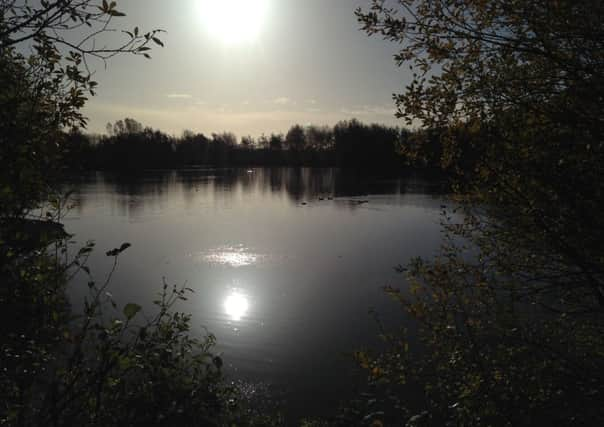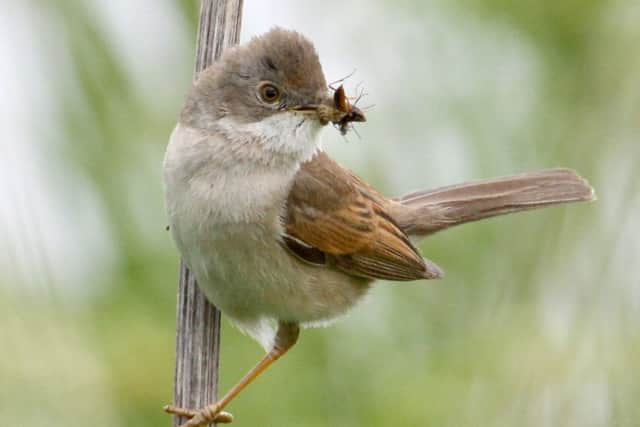Rebirth of a tranquil wildlife haven


During the last 12 years, a vast site on the edge of the village of North Cave in East Yorkshire has been transformed from a landscape scarred by quarrying into a wetland habitat thriving with wildlife.
These days, the vast former sand and gravel quarry is known as North Cave Wetlands Nature Reserve. Managed by the Yorkshire Wildlife Trust, it’s home to two per cent of Britain’s population of breeding avocets and almost one per cent of its waders and ducks. In all, 210 different species have been recorded there, including around 160 bird species, 29 different types of butterflies and 19 species of dragonfly.
Advertisement
Hide AdAdvertisement
Hide AdIronically, the area now looks much as it would have done around 200 years ago, before it was drained for agricultural purposes. Back then it was part of a vast area of marsh, fen and wetland known as Wallingfen.


Stephen Martin, who lives in the nearby village of Hotham, has championed the development of the wetlands since the idea was first mooted back in 1999.
He explained: “I’m proud to be associated with the wetlands. It’s a partnership between the Yorkshire Wildlife Trust, which owns it; local people, who help run and maintain it; and Humberside Aggregates, which quarries the land and then, in accordance with their planning permission, is restoring it to our design and creating the physical reserve. All three work as a team.”
The original 40-acre site was acquired in 2001 and, since then, the partners have worked together to submit two joint planning applications – one relating to an additional 105 acres of land and the other concerning a further 140 acres.
Advertisement
Hide AdAdvertisement
Hide AdStephen explained: “All the partners working together on a joint planning application like that was a national first. The land is quarried and then handed over in phases to the Yorkshire Wildlife Trust, and the volunteers who work with it to manage and maintain the site. Work on quarrying the western extension – the final 140 acres of land – hasn’t even begun yet but will take place over the coming years.
“Before handing land over, Humberside Aggregates moves hundreds of thousands of tonnes of material around so that the design is to our specification. This is necessary because aggregate companies dig deep holes but birds like shallow holes with verges and islands.”
Tony Martin, who manages the reserve on behalf of the Yorkshire Wildlife Trust, said: “Humberside Aggregates have gone way over and above what they were obliged to do and are always happy to help us. It has been a pleasure to work with them; a real partnership. If ever we have any problems or need anything doing on the site, they’ll send some machinery over.”
As well as overseeing the expansion and development of the site, Tony’s role involves building and strengthening links with the local community, including North Cave Primary School.
Advertisement
Hide AdAdvertisement
Hide AdHe added: “We want to link in with the National Curriculum, and hope to work with other schools, colleges and universities too. This is very much a people and wildlife site.”
The nature reserve is predominantly made up of a combination of shallow and deep water lakes with shallow gravel islands, and reed beds. A wheelchair accessible perimeter path leads to four large hides. Last year, 20 acres of flood meadow, known as Dryham Ings, was also created.
Stephen explained: “Humberside Aggregates did a brilliant job of levelling the land with a ridge and furrow system to replicate old meadowland. It’s already a breeding site for waders and ducks.”
It’s estimated that the site now attracts up to 20,000 visitors each year and North Cave Parish Council has recently secured a grant of £48,000 from WREN (Waste Recycling Environmental Limited) to further improve and develop the facilities.
Advertisement
Hide AdAdvertisement
Hide AdLinda Bayram, chairman of North Cave Parish Council, said: “The wetlands is a great asset to North Cave and we’re happy to help in any way we can. When the next phase is finished, it will be marvellous.”
The money will be spent on new and improved signage and maps around the reserve, environmentally-friendly compost toilets for visitors to use and a new viewing area.
Further funding towards the cost of running the site has come from Natural England’s Higher Level Stewardship and Humberhead Levels NIA (Nature Improvement Area) schemes.
Although the reserve looks like it has been there for centuries, the heavy duty quarrying machinery working on neighbouring land acts as a constant reminder that it’s a recent creation and that what you see today is just one third of what will eventually be a much bigger site.
Advertisement
Hide AdAdvertisement
Hide AdStephen said: “What was, in 2001, a 96-acre quarry, will, in ten years, be 350 acres of wetland. It’s fantastic because the country needs sand and gravel for building but the holes are being restored back to conservation sites. It’s a long-term sustainable use of land.”
For more information, visit: http://www.ywt.org.uk/reserves/north-cave-wetlands-nature-reserve
Reserve proves fertile breeding site
During the winter, North Cave Wetlands Nature Reserve is home to a wide variety of ducks, geese and other wildfowl that migrates in from further north. Pink footed geese and Hooper swans are among the more unusual visitors this year.
From March onwards, it’s an important breeding site for a host of wading birds, including avocets, ringed plover, lapwings, oyster catchers and redshank.
Advertisement
Hide AdAdvertisement
Hide AdDuring the summer months, you’ll spot large numbers of dragonflies and damselflies near a specially-created series of smaller ponds. Early May is one of the busiest times, with up to 80 species of birds.